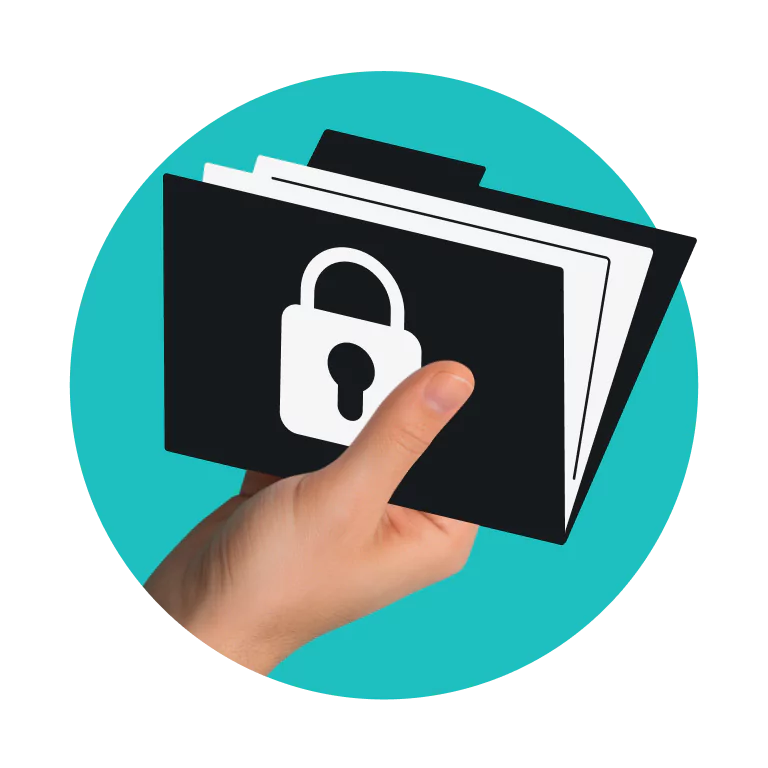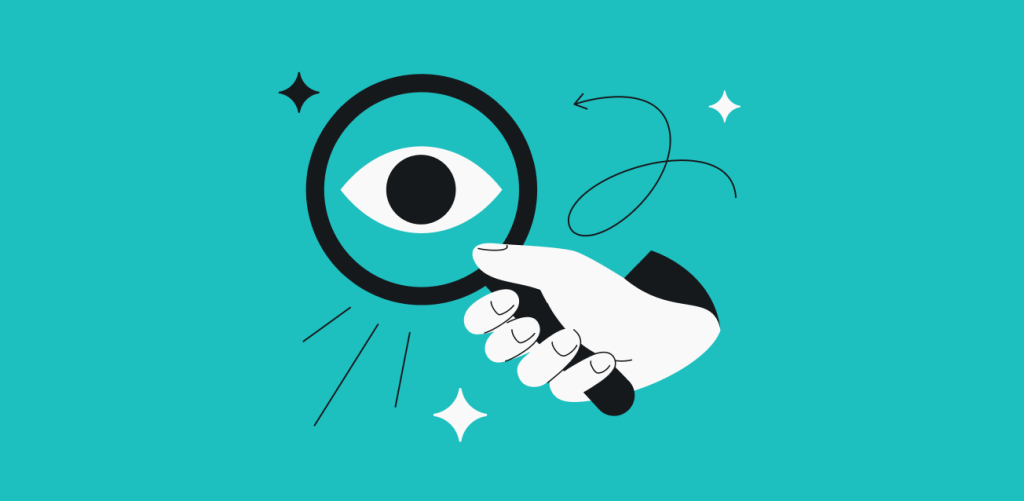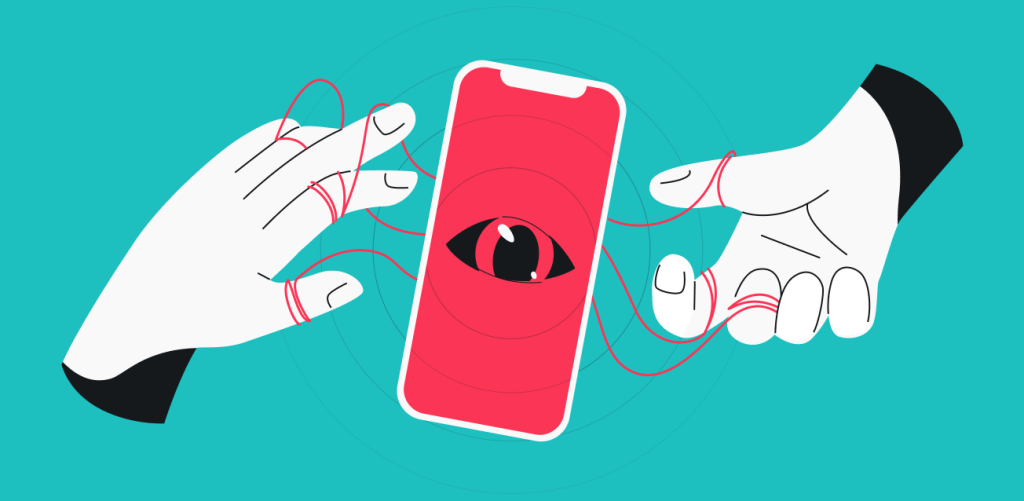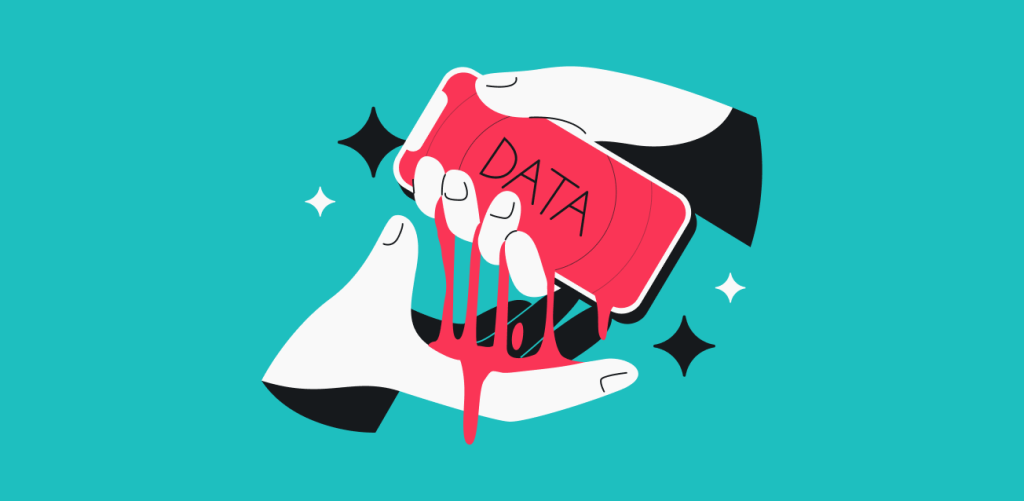Cybercriminals steal personal data from millions of people every year through sophisticated attacks that exploit both technology and human psychology. Understanding their methods helps you recognize threats and protect your online life.
What information do hackers target?
Hackers focus on data they can monetize or use for further attacks — a 2023 FBI report found social engineering scams in the US caused close to $10 billion worth of documented losses.
Here’s what they’re after:
- Passwords and login credentials: these unlock accounts across multiple platforms and services;
- Financial information: credit card numbers, bank account details, and Social Security numbers can be sold or used directly for fraud;
- Personal details: your full name, address, phone number, and birthdate help hackers bypass security questions, impersonate you to customer service, or build convincing phishing campaigns;
- Email addresses: these serve as usernames for most online accounts and become attack vectors;
- Medical records: these fetch high prices on dark web markets because they contain comprehensive personal information that doesn’t change quickly;
- Photos and private messages: these become blackmail material or identity theft resources;
- Work-related data: company credentials, client lists, and internal communications can trigger corporate espionage or wider data breaches affecting thousands of people.
How hackers get information about their victims
Cybercriminals use multiple attack methods to steal your personal data. Understanding these techniques helps you spot and avoid them.
Phishing attacks
Hackers send emails, texts, or messages that mimic legitimate companies to trick you into entering credentials on fake websites. These messages create urgency (Your account will be closed) or fear (Suspicious activity detected) to bypass your normal caution.
The fake websites look identical to real login pages. When you enter your username and password, hackers capture the information directly.
Data leaks
Companies store your personal information in databases that become targets for sophisticated attacks. When hackers breach these systems, they access millions of records simultaneously.
Major breaches expose usernames, passwords, email addresses, and sometimes payment information. Since people reuse passwords across multiple accounts, one breach can compromise your entire online identity.
Social engineering
Hackers manipulate people through conversation and psychological pressure. They might call pretending to be from your bank, asking you to “verify” account information. Or they pose as IT support, requesting your login credentials to “fix” a problem.
These attacks work because they exploit trust and authority through social engineering techniques. The hacker sounds professional, knows some basic information about you, and creates a plausible scenario.
Malware and spyware
Malicious software installed on your devices can record everything you type, including passwords and credit card numbers. This malware spreads through infected email attachments, compromised websites, or fake software downloads. Once installed on your device, it operates silently in the background, using several sophisticated methods to steal your information.
Keyloggers capture every keystroke, while screen recording malware takes screenshots when you visit banking sites. Some malware searches your files for documents containing personal information. All of this happens without your knowledge, giving hackers complete access to your most sensitive data.
Unsecured networks
Public Wi-Fi networks often lack proper encryption, allowing hackers to intercept data traveling between your device and the internet. To capture traffic from unsuspecting users, they set up fake Wi-Fi hotspots with names like “Free Wi-Fi” or “Airport Wi-Fi”.
When you connect to these networks, hackers can see your browsing activity, capture login credentials, and inject malware into your device.
Excessive app permissions
Mobile apps often request far more permissions than they need to function. Malicious or poorly designed apps use these permissions to access your contacts, location data, photos, microphone, and camera without your knowledge.
Even legitimate apps can become data collection tools. They track your behavior, build detailed profiles, and sometimes share this information with third parties who may not protect it properly.
Data brokers and third-party sales
Companies collect your information through loyalty programs, surveys, and service registrations, then may sell it to data brokers. These brokers compile comprehensive profiles and can sell access to anyone willing to pay, including criminals.
Your information may spread across dozens of databases with varying security standards. When any of these third-party systems get breached, your data could become available to hackers even though you never directly interacted with the compromised company.
Here’s how Darius Belejevas, Head of Incogni, illustrates this process:
“Someone buys your LinkedIn information, someone else buys [information on] your place of residence, then models what your income might be based on your zip code. They buy your shopping and browsing habits, which […] can be de-anonymized and linked. You end up with an entire ecosystem where some companies collect, analyze, and sell, and others […] buy and supplement their data to get complex profiles about us.”
Fake websites and services
Hackers create convincing replicas of popular websites, government services, or financial institutions. These sites capture login credentials, personal information, and payment details when users try to access services or make purchases.
Some fake sites rank highly in search results for common queries like “government benefits application” or “free credit report,” intercepting users who think they’re visiting legitimate services.
Fraudulent financial services
Similarly, hackers can also create fake investment platforms, loan services, or cryptocurrency exchanges that look legitimate. When you sign up and provide personal information to verify your identity, they capture everything: Social Security numbers, bank account details, employment information, and identity documents.
These services often promise unusually high returns or guaranteed approvals to attract victims. Once they have your information, they disappear or continue operating while selling your data.
Physical access
Hackers may also gain information through direct access to your devices or documents. They might look over your shoulder while you type passwords, steal mail containing financial statements, or access unlocked computers.
Dumpster diving reveals discarded documents with account numbers, addresses, and other personal details. USB drops involve leaving infected USB drives in parking lots, hoping curious people will plug them into their computers.
Why do hackers want your information?
Understanding hacker motivations helps you recognize which of your information poses the highest risk. Here are the main reasons cybercriminals target personal data:
- Financial gain: most cybercrime is driven by money. Hackers can sell stolen credit card numbers for $1-5 each on dark web markets, while complete identity packages with Social Security numbers, addresses, and financial details sell for $30-200;
- Account access expansion: your compromised accounts can become stepping stones to more valuable targets. Hackers use your email to reset passwords for banking and investment accounts;
- Network exploitation: they may leverage your social media connections to launch attacks against friends and family members who trust communications from your accounts;
- Corporate espionage: some hackers focus on stealing trade secrets, government information, or competitive intelligence for economic or political advantage;
- Personal vendettas: others pursue ideological goals, using stolen information to embarrass or harm specific individuals or organizations;
- Ransomware operations: attackers can encrypt your files and demand payment, often stealing sensitive data first to threaten publication if you don’t pay.
What hackers can do with your information
Once hackers steal your data, they put it to work in various criminal schemes. Here’s how they monetize and weaponize stolen information:
- Direct financial fraud: they may use your credit card information for unauthorized purchases, often buying gift cards or cryptocurrency that can’t be easily traced;
- Identity theft: there are many different types of identity theft: opening new credit accounts, taking out loans, or filing fraudulent tax returns in your name can create long-term financial damage that takes months or years to resolve;
- Email account exploitation: your compromised email accounts may become platforms for attacking your contacts through phishing messages that appear to come from you;
- Social media manipulation: hackers can use your social accounts to spread malware and scams to your network, posting links to infected websites or promoting fake investment opportunities;
- Corporate infiltration: stolen business credentials enable espionage and insider attacks, allowing hackers to access company systems, steal intellectual property, or install backdoors for future breaches;
- Dark web sales: they may package and sell your information to other criminals specializing in different types of fraud.
How to tell if hackers have your information
Early detection of compromised information helps you respond quickly and limit damage. Watch for these warning signs:
- Unauthorized financial transactions: monitor your accounts for any charges you didn’t make, even small ones that hackers use to test stolen cards;
- Unexpected account notifications: password reset emails you didn’t request, new device login alerts, or account security warnings suggest someone is trying to access your accounts;
- Credit report changes: new accounts or inquiries you didn’t authorize appear on your credit reports;
- Strange messages from your accounts: friends report receiving unusual messages from your social media accounts or email address;
- Device performance issues: your devices show signs of malware: slower performance, unexpected pop-ups, programs running that you didn’t start, or unusual network activity;
- Missing mail: financial statements or tax documents don’t arrive as expected, suggesting mail theft;
- Bills for unknown services: receiving bills for accounts you didn’t open, indicating identity theft.
To boot, you can use our online personal Data Leak Checker to see if your email address has been affected by a data leak.
How to protect yourself against hackers
Prevention requires multiple layers of security across your online life. These practices significantly reduce your risk:
- Use unique, complex passwords: password managers generate and store strong passwords automatically, eliminating the temptation to reuse simple ones;
- Enable 2FA (Two-factor Authentication): add a second verification step that makes stolen passwords useless without access to your phone or authentication app;
- Keep your software updated: security patches fix vulnerabilities that hackers exploit to install malware or access your system;
- Verify information requests: contact organizations directly through official channels rather than trusting caller ID or email addresses, which can be spoofed;
- Use secure networks only: avoid public Wi-Fi for banking or shopping. Connect through a VPN (Virtual Private Network) that encrypts your traffic when you must use public networks, and learn how to tell if someone has hacked your router;
- Review privacy settings: limit personal information visible to strangers on social media, as hackers use these details to craft convincing attacks;
- Monitor accounts regularly: check bank statements, credit card bills, and online account activity for unauthorized access or transactions;
- Be cautious with links and attachments: never click on suspicious links from unknown senders in emails, text messages, or social media posts. Learn how to avoid getting hacked on social media and protect yourself from malicious links;
- Learn to recognize signs of a compromised device: your devices may show warning signs like unusual slowness, pop-ups, or suspicious activity. Understand how to recognize if your phone is hacked and how to tell if your computer has a virus.
How Surfshark can help you stay safe
Surfshark’s cybersecurity tools provide multiple layers of protection against the hacker methods described above:
- Surfshark VPN helps you mask your regular IP (Internet Protocol) address and location, making it harder for criminals to build profiles on you and do other harmful things hackers can do just by knowing your IP address;
- Alternative number, a paid add-on to Surfshark’s Alternative ID, gives you a phone number to use for signups and registrations. Use this number instead of your regular one for apps, websites, or services that don’t need your primary contact information. This limits exposure if those services get breached or sell your data, minimizing calls from random numbers;
- Surfshark’s alternative email creates email address aliases that forward messages to your real inbox. Use different alternative emails for different services to track which companies share or sell your information. If one gets compromised, you can delete it without affecting your primary email account;
- Surfshark Alert monitors data leak databases for your personal information. It notifies you immediately when your email, passwords, credit card numbers, or other sensitive data appear in new leaks, letting you respond quickly to limit damage;
- Surfshark Antivirus protects your devices from malware and spyware that steal personal information. It blocks malicious websites, scans downloads for threats, and removes existing infections that might be logging your keystrokes or accessing your files;
- Surfshark Search provides private web searching without tracking or storing your queries. Regular search engines build profiles based on your searches that can reveal personal information to hackers who breach their systems.
What to do if your information was compromised
Quick action limits damage when hackers steal your information. Follow these steps immediately:
- Change passwords: update credentials on all affected accounts immediately, starting with email and financial accounts;
- Contact financial institutions: report fraudulent activity to banks and credit card companies so they can freeze accounts, issue new cards, and help dispute unauthorized charges;
- Protect your credit: place a fraud alert or credit freeze with credit bureaus to prevent new accounts from being opened in your name;
- File official reports: contact the FTC for identity theft, your local police for financial crimes, and the FBI’s IC3 for internet crimes;
- Document everything: keep records of fraudulent charges, time stamps of suspicious activity, and correspondence with financial institutions for disputes and investigations;
- Consider monitoring services: identity monitoring watches for your personal information online and alerts you to potential misuse;
- Warn your contacts: inform friends and family if your email or social media accounts were compromised to prevent hackers from attacking them;
- Strengthen security: use this incident as motivation to implement better password practices, enable 2FA, and update privacy settings across all accounts.
Don’t wait until you are the target
The threats to your personal information are real and constantly evolving, but you’re far from powerless against them. Beyond basic security habits, investing in reliable cybersecurity tools — like VPNs, password managers, and comprehensive security suites — creates multiple layers of protection that work around the clock. Remember, cybersecurity is about making yourself a harder target than the next person.
Frequently Asked Questions
What is the most common way hackers find information?
Hackers often gather information through phishing attacks, where they trick users into revealing personal data via fake emails or websites. They may also use publicly available information from social media and data breaches to build detailed profiles.
What data do hackers want to steal?
Hackers typically target personal data like passwords, credit card numbers, Social Security numbers, and login credentials. They can use this information for identity theft, financial fraud, or to sell on the dark web.
How can I avoid getting hacked on social media?
Use strong, unique passwords for each account, enable 2FA, and be cautious of suspicious links or messages. Also, limit the personal information you share publicly and review your privacy settings regularly.
Can hackers access my camera and microphone?
Yes, hackers can exploit security vulnerabilities or trick users into installing malware that grants remote access to cameras and microphones. Keeping your software updated and using reputable security tools can help prevent this.
How do I know if I’ve been hacked?
Signs you may have been hacked include unexpected logins or password changes, strange activity on your accounts, or your contacts receiving suspicious messages from you. You might also notice slower device performance or unknown apps installed.




